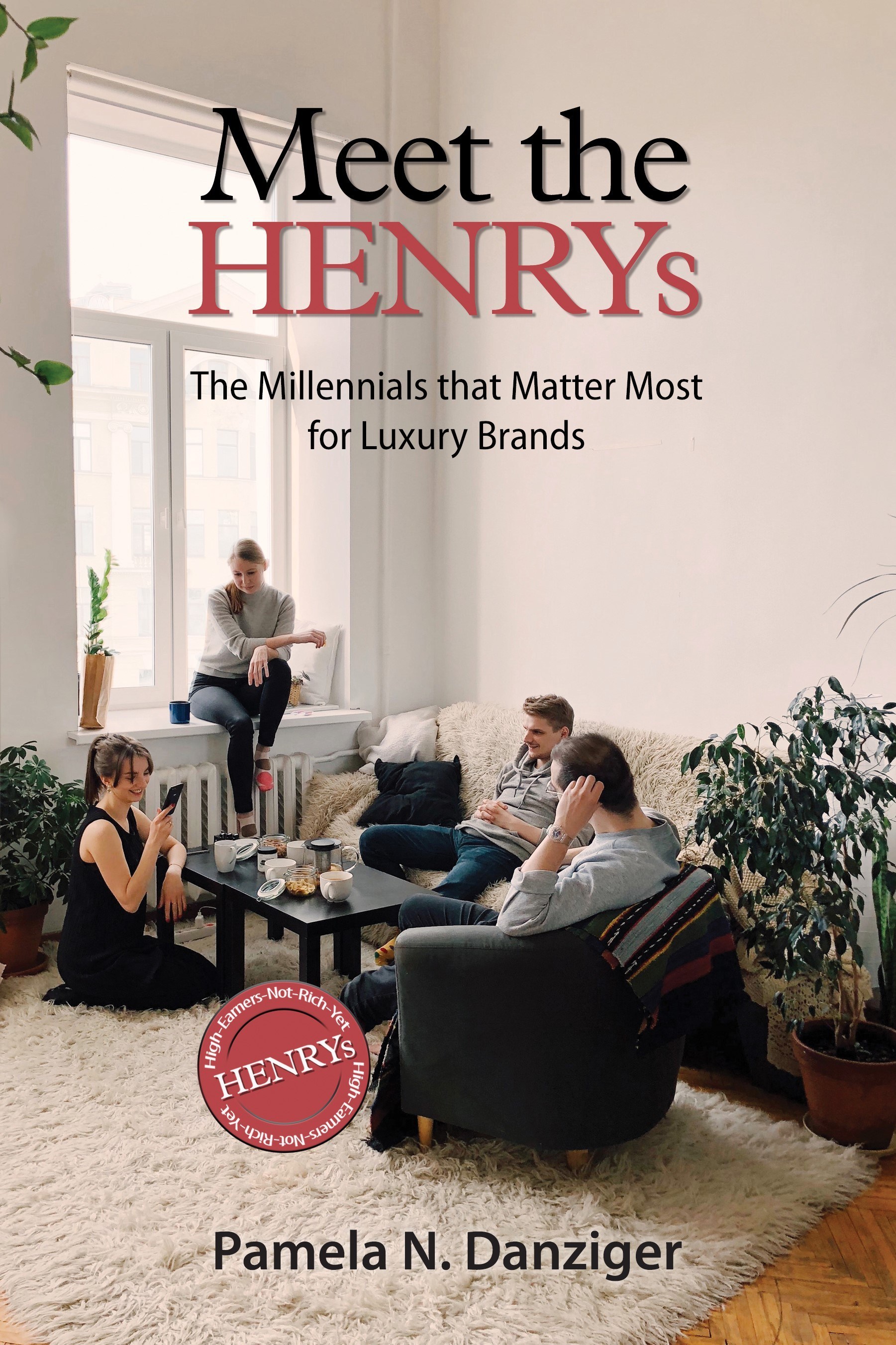Reviewed by Shaili Bhatt, shailib@crresearch.com
Sr. Research Director, C+R Research, Chicago, IL
Have you met a HENRY? Chances are, you have, or you might be one yourself! Coined in 2003, the term HENRY refers to Millennials who are “High Earners, Not Rich Yet.”
In Meet the HENRYs: The Millennials That Matter Most for Luxury Brands, author Pamela N. Danziger delineates what makes HENRYs the key to marketing and retailing success, stating that they should be our new target consumer in today’s post-recession economy.
Among the Millennials born between 1980 and 2000, there are six HENRYs for every ultra-affluent consumer in the US. HENRY Millennials have average household incomes between $100K and $250K. They tend to practice more mindful consumption due to owning smaller homes, and they are also facing a heavier tax burden compared to previous generations, all of which influence their mindset and inclination to buy products with “multifaceted value.”
This is an era of trepidation for luxury brands. In a rather startling statistic, 26% of US Millennials who are interested in luxury goods (over $500) haven’t purchased any in the past twelve months. This does not bode well for the future of luxury brands in the US, which in fact is the world’s largest luxury market.
Danziger depicts a noteworthy shift in how consumers are defining luxury as a state of mind, not a brand or price point. She provides excellent examples to assert this new definition of luxury, and I appreciate her optimistic perspective on what is attracting HENRYs.
In a memorable chapter of the book, Danziger expresses how this generation has pulled back the curtain to question the marketing strategies that make up the allure of luxury brands. Another concern for luxury brands is that Millennials know how to acquire luxury-quality goods at a significantly lower price.
This book reveals a core truth about Millennials and HENRYs in that positioning a brand as “luxury” may well turn young people off more than it turns them on when it comes to attracting their attention and spending dollars. Conspicuous consumption, exclusivity, elitism, and extravagance are tightly bound to widening income inequalities.
In a series of examples, Danziger masterfully examines the need for retail innovation to build luxury brands and products that are more inclusive, more personalized, eclectic, and more transparent, reflecting Millennials’ core values and lifestyles. Instead of brand marketers dictating the luxury brand, they must follow the consumers’ lead.
The book describes how luxury marketing must evolve from its focus on aspiration to one of inspiration. HENRYs aren’t interested in a brand to give them status. As a long-standing owner of several IKEA products, I appreciate how the author establishes the case that home furnishings retailers won’t be able to ignore this Swedish brand and its inspiring, design-forward catalogs any longer.
Some of Danziger’s solutions for anticipating HENRYs’ needs include:
- Blending in-store access with Internet convenience
- Direct-to-consumer sales
- Next-gen stores that are more experiential and social
- User-generated products
- Offering personal connections—
customer service never goes out of style.
Meet the HENRYs also touches on an updated definition of the 4Ps of marketing, the 4Es—Experience, Everyplace, Exchange, and Evangelism. Danziger describes how the 4Es reflect how “marketing is the activity, set of institutions, and the processes for creating, communicating, delivering, and exchanging offerings that have value for customers, clients, partners, and society at large.”
Danziger outlines a contemporary opportunity for retail blue chips like Walmart, Macy’s, and Target to acquire smaller startup players to offer a business model and a way of doing business that they fundamentally don’t have.
The book feels mildly repetitious in how it circles back to a few key HENRY brand success stories, like Shinola, which serves as a reminder in case you are reading the book over a longer time. The stories are also heavy on examples from fashion and retailer worlds.
Overall, I recommend reading this book for a stronger understanding of HENRYs as target consumers: who they are, what they believe, and what they want. For any qualitative consultant, brand manager, or market strategist, there is no shortage of stories in this book to convey why companies need entirely new branding strategies to captivate these affluent consumers.
NOTE: For more information about HENRYs please see the review of another of Danziger’s books, Home for HENRYs: Meet the New Customers Home Décor Marketers Are Searching For, reviewed by Robin Falkoff, in the Fall 2017 edition of QRCA VIEWS.


Be the first to comment